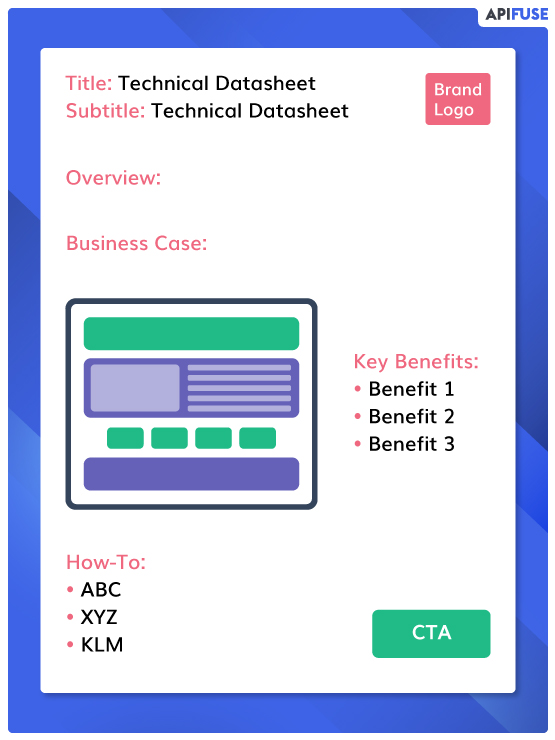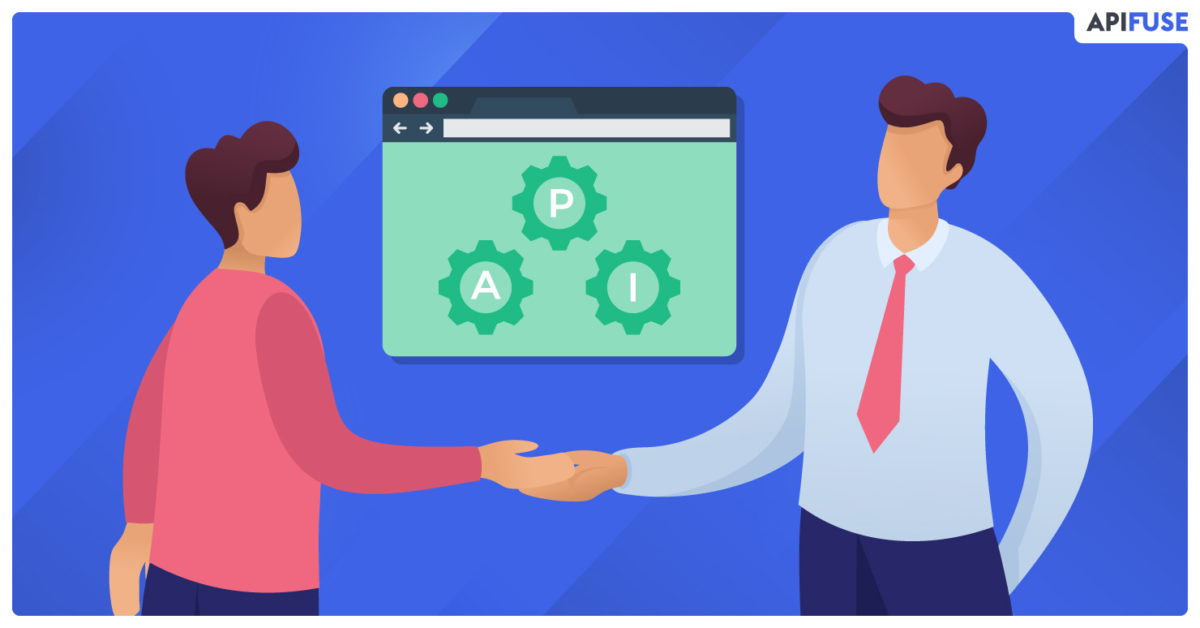You understand the benefits API integrations in your product provide your customers – but are you communicating those benefits in a way that accelerates revenue?
If you’re lucky, your current customers and prospects will already be educated about the value inherent to integrations, but that’s often not the case. Even if your clients are familiar with the concept of integrations already, most will expect you to be able to “sell” them in a professional manner with marketing materials and data. Imagine if you, yourself, were hiring a contractor to renovate your kitchen. That contractor might be best-in-class, but would you actually consider hiring them just because they told you as much? No. You’d want to see their website, look at reviews, and judge for yourself their merit.
Your clients are the same. Smart business people won’t opt for an upgrade unless it’s packaged professionally and they can see the benefits for themselves.
Having these sorts of marketing materials close to your hand builds trust with your clients and lets them know that ‘you know’ what you’re doing. The goal is to make it as simple as possible for your clients to access the information they need to make educated decisions about your API integrations. You know that adding integrations will help your customers save time and money – but do they?
Set the Groundwork – Do These Things Before Actioning on Marketing Initiatives

Before you can jump into a plan to marketize your API integrations to your customers, you need to take a step back and analyze the lay of the land. Doing so will help you make cohesive marketing materials, faster, and tailored to your clients in a way that is more persuasive and personalized.
Step One: Know Your Audience (buyer personas)
Not taking this crucial step is the downfall of many smart marketers. It doesn’t matter how beautifully crafted your marketing materials are if they fundamentally aren’t crafted for your specific audience. This step isn’t meant to stall the process of taking action on your plan, rather, it should be a quick activity you undertake with your cross-departmental teammates.
Get feedback from sales, product, engineering, or anyone else in your business who might have the best grasp of who is actually going to buy and benefit from your new integrations. Start from a 5,000-foot view and work your way down.
- Which industries would best benefit from your integration, is there a particular existing account type to target?
- What about the size of the business, SMB clients, or larger?
- Who at these companies will be the first to be targeted? CEOs, IT professionals, operations managers, customer service?
- Are these people new to the concept of integrations? Or will they expect a more technical “nuts and bolts” dialogue on the integration offering?
There can be multiple answers to these questions, and you don’t have to follow a rubric. This process can be documented in an official Buyer Persona you create or written on a sticky note on your desk. It’s more of an exercise to help you avoid needing to backtrack and re-create materials because they aren’t relevant to your target audiences.
Step Two: Outline Your Business Case for the Integration
This step is more obvious than the previous but just as important. Take the time to outline your business case for API integration. You will want to highlight these benefits in each and every one of your marketing materials and they should be cohesive throughout. This will help ingrain the benefits for prospects who view multiple materials and reduce any confusion for them. Depending on how many buyer personas you have, it may be prudent to emphasize on different aspects of the business cases for each. A CEO for example may be more intrigued by rapid ROI while a Customer Service Manager may be most interested in how much time it will save their team.
Ask yourself these questions to begin developing your business case:
- What problems will this integration solve?
- How will the end-user interact with the integration?
- Long-term, what are the savings this integration will provide (time, money, other resources)?
- What is the total cost of ownership (TOC) for your customer?
- When can they expect a return on their investment (ROI)?
Step Three: Start with the Numbers
Who doesn’t like to look at proof-point data before they decide to buy something? Being able to show your potential customers the numbers before they invest is a sure-fire way to grab their attention. Getting relevant data and proof points like time savings, dollar savings, and quotes from happy customers can be a challenge. Not because they don’t exist, but because everyone’s time is valuable.
Before you start to widely market your new API integrations with your product, consider offering a promotion to select customers. Many savvy organizations will offer up deeply discounted versions of their new offerings with the promise of a case study afterward. This gives the client the opportunity to have early access to a wonderful product, the opportunity to give their valuable feedback directly, and provides them immediate cost-savings, leaving them with a “good taste in their mouths.” You can use this agreement to glean valuable proof points for future customers that will jazz-up your other marketing materials.
If speaking to the early adopters of your new offering isn’t possible, look for relevant industry statistics to include and make plans to talk to future customers as soon as possible.
The Key Marketing Collateral You Need to Drive Revenue from New API Integrations

Put Your Concept Into Action
Now that you know your audience, have built your business case, and have gathered any relevant data points, it’s time to start actioning on your marketing plan! Execute on these 9 activities to build a strong marketing campaign for your new API integration and drive revenue and leads for your business
Online Presence
1. Build a Landing Page on Your Website
Having a web presence that clearly explains your core features and integration options is essential for all SaaS applications, cloud-based products, and software companies. Landing pages are the first place most prospects will look at, even accidentally, when considering your product. They serve as an entry point for a deeper conversation and, best-case-scenario, are a tool that prospects can use to seamlessly purchase an integration from your application ecosystem in a self-serve manner.
Landing pages should include all the relevant business case information, product, and use specifications, downloadables, as well as eye-catching imagery, CTAs, and a Contact Us form. If you have chosen to leverage an advanced iPaaS, like APIFuse, you will be able to attract more customers by showcasing integrations, apps, and partners in your very own application ecosystem within your technology. Showcasing this easy-to-use marketplace on your website will take a lot of the “mystery” out of purchasing integrations for your customers.
Webpages are also key for getting ranked highly on search engines like Google. If a potential client types into Google the type of core product you offer plus the name of an integration you provide, you want your website to show up. Having landing pages including relevant keywords and links will improve your ability to organically source leads and win new business.
2. Authentic and Relevant Content: Blogs, Articles, and Press Releases
In addition to a well-rounded landing page detailing your integration options, blogs, articles, and press releases are also valuable tools to strengthen your online presence. These written pieces should link back to your landing page and include relevant sources from trusted third parties. Thought leadership blogs about your industry are excellent ways to build links and be seen as a leader in your industry.
Ideally, a media outlet will write their own article about your core product and mention your new integration options. Offer publications in your industry interviews with SMEs at your company, or, better yet, interviews with your customers to get first-hand quotes.
If you choose to put out a press release announcing your new API integration offerings, make sure to include the business case as well as a quote from an expert at your company. Case studies also make highly effective press releases.
While press releases, articles, and blogs are wonderful vehicles to build brand awareness, they alone are unlikely to drive many direct leads. Without them, however, your direct lead generating efforts will not have the firm backing they need to be trusted. Work on building an active blog and managing relations with editors at relevant publications.
Technical Datasheets
You might be asking yourself, why do I need to make a datasheet about my new API integration offerings? I just made a landing page that sums up everything nicely…
Datasheets will contain similar information on your landing page but come in the form of a PDF. This means that they can be easily attached to an email by a sales representative, can be taken physically to a conference or client meeting, and contain more technical information about the product. Datasheets may also include a How-To section that will break down the process of physically initiating an integration as well as estimated implementation times.

Email Campaigns
Email has become ubiquitous in marketing as the primary lead generation tool. It’s an excellent way to drive traffic to your website and start direct conversations with prospects and customers. Emails can be filled with conversion points which help your audience choose the method they prefer to learn more about your offerings. There are two main “types” of email campaigns you should focus on when thinking about marketing your new API integrations. These are highly branded marketing email campaigns and unbranded, personal outreaches from your sales team.
Marketing Email Campaigns
Marketing email campaigns are exactly what they sound like. Branded, formal emails that read almost like an ad. These are used to give a broad audience a quick look at your business case and direct them to more information. You can include links to your website, Contact Us forms, datasheets, customer testimonials, or anything else you have available. If you’re planning to do multiple emails on this subject, you can even feature one of these pieces in each email. No matter what you include, make sure there are numerous conversion points in the email and that the top banner is professionally branded.
Remember to tailor each of your emails to your buyer persona. It’s also important to write emails differently depending on whether you’re targeting current customers you’re hoping to upgrade versus emailing prospects. It’s embarrassing to email a current client telling them to buy your core product because you have new integrations available!
Sales Email Campaigns
Sales email campaigns are your way to ensure that the sales team is promoting the new API integration offering in a cohesive way. Instead of letting your sales team fend for themselves, you can provide them with a template they can use to directly email their prospects! This will eliminate spelling/grammar issues, make sure all the sales team is “speaking the same language” and ensure that customers receive that personal touch, which can be so helpful in winning deals.
Social Media and Ad Space

Promoting your new integrations on social media is a must. The best way to do this is to start with a branded banner customized to fit the layout of your social platform (Twitter, LinkedIn, and Facebook are generally considered to be the most important platforms). Your banner should be clear and concise and link directly to your website. You may even choose to promote your banner on various channels based on industry or job title. Check your buyer persona today!
As you create more content like datasheets, blogs, etc, make sure to post those on your various social media accounts as well.
Summary
If you follow this process, you will be able to educate your customers and prospects about the benefits of adding integrations and drive revenue for your company.
Marketing is about the long game. Your goal is to educate, give prospects the information they need to make decisions and persuade internal stakeholders, and generate leads. Taking only one action isn’t enough to successfully market a new API integration, instead, give your customers a variety of paths to discover the benefits! Make it as simple as possible for them and you’ll accelerate adoption.
You know that adding integrations will help your customers save time and money – help them get to the same understanding!
Accelerating revenue is easier than ever when you leverage iPaaS technology to deliver integration options to your customers. API Fuse enables you to offer on-demand integrations and to rapidly respond to end-users integration requests. With our solution and range of plans, you can offer your customers native or custom integrations embedded directly into your SaaS app in minutes to accelerate your product roadmap and reduce technical debt. Request a demo today for more information!
